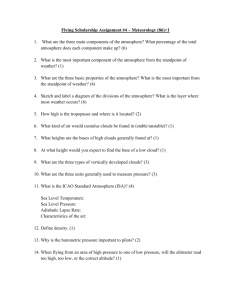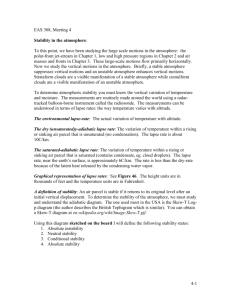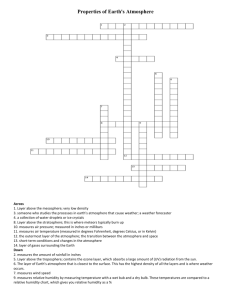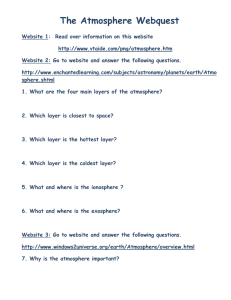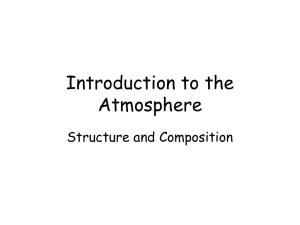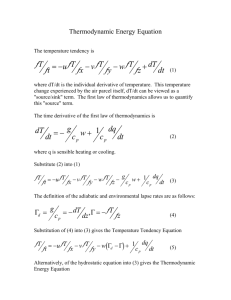A 1.2.4 Atmosphere
advertisement
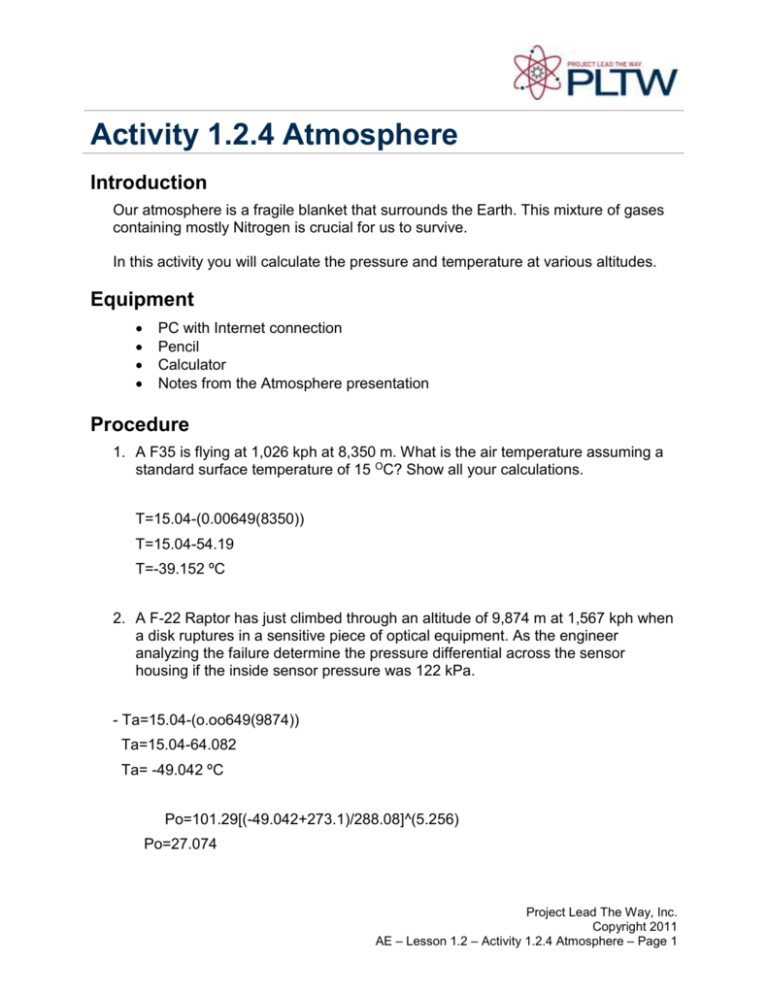
Activity 1.2.4 Atmosphere Introduction Our atmosphere is a fragile blanket that surrounds the Earth. This mixture of gases containing mostly Nitrogen is crucial for us to survive. In this activity you will calculate the pressure and temperature at various altitudes. Equipment PC with Internet connection Pencil Calculator Notes from the Atmosphere presentation Procedure 1. A F35 is flying at 1,026 kph at 8,350 m. What is the air temperature assuming a standard surface temperature of 15 OC? Show all your calculations. T=15.04-(0.00649(8350)) T=15.04-54.19 T=-39.152 ºC 2. A F-22 Raptor has just climbed through an altitude of 9,874 m at 1,567 kph when a disk ruptures in a sensitive piece of optical equipment. As the engineer analyzing the failure determine the pressure differential across the sensor housing if the inside sensor pressure was 122 kPa. - Ta=15.04-(o.oo649(9874)) Ta=15.04-64.082 Ta= -49.042 ºC Po=101.29[(-49.042+273.1)/288.08]^(5.256) Po=27.074 Project Lead The Way, Inc. Copyright 2011 AE – Lesson 1.2 – Activity 1.2.4 Atmosphere – Page 1 Project Lead The Way, Inc. Copyright 2011 AE – Lesson 1.2 – Activity 1.2.4 Atmosphere – Page 2 3. Verify your answer using the NASA AtmosModeler at http://www.grc.nasa.gov/WWW/K-12/airplane/atmosi.html. Print screen of the final output. Note that the output toggle should be changed to Data to see the precise outputs. NASA AtmosModeler Conclusion 1. Explain how the temperature lapse rate will affect aircraft design. The temperature lapse rate will effect what the aircrafts material is made of 2. Explain how the pressure lapse rate will affect aircraft design. It can damage the aircraft and maybe cause a accident resulting in a mid-flight accident Project Lead The Way, Inc. Copyright 2011 AE – Lesson 1.2 – Activity 1.2.4 Atmosphere – Page 3
